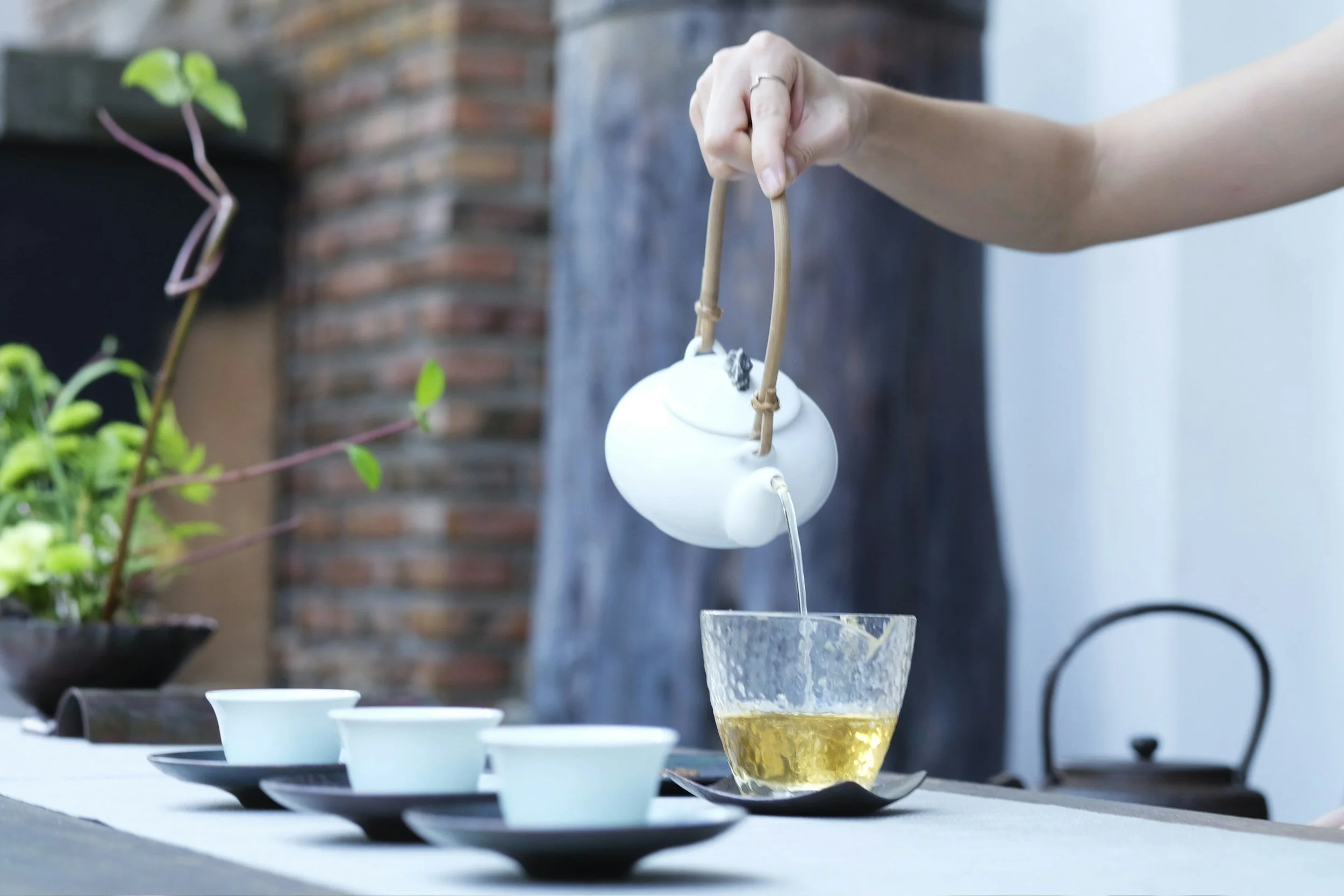Japanese Tea Ceremony
The Japanese tea ceremony is called Chanoyu or Chado meaning The Way of Tea and is centred around four main principles; Harmony (wa), Respect (kei), Purity (sei), and Tranquillity (jaku). The ritual originated in the 16th century and is a time to enjoy friendships, tea, and escape the stresses of life. It is about minimisation, and spiritual purification.
The tea ceremony takes place in the Cha Shitsu or Tea House. It is a small quiet room, with minimal décor, tatami mats, seasonal flowers, and soft lighting. There is a small stove in the middle of the room and a kettle hangs from the ceiling. There is usually also a hanging scroll with calligraphy which is hung in the scroll alcove of the tea room.
Traditional tea rooms are surrounded by a garden which is simple and devoid of garnish colours or scents. There is also a stone basin for visitors to wash their hands before they enter the tearoom.
Matcha is the tea used in the Japanese Tea Ceremony. However, sometimes sencha a loose-leaf tea can be used.
During the ceremony both a thick tea and a thin tea are served. The thick tea koicha contains a larger amount of matcha which is kneaded with a whisk in hot water. This tea is shared amongst all the participants. A thin tea usucha is then served after and doesn’t contain as much matcha. The matcha is whipped in hot water with the whisk. Thin tea is served to each individual rather than shared amongst everyone.
Tea gatherings can be either informal or formal, with formal gatherings lasting up to four hours long. An informal tea ceremony may take the form of a picnic-style event, which is outdoors and known as nodate.
The equipment for the tea ceremony includes the following;
Chasen (tea whisk)
Natsume (tea container)
Chashaku (tea scoop)
Chawan (tea bowl)
Chakin (a cloth used for wiping the tea bowl)
Along with a plate, and kettle.
In the 1500’s Sen no Rikyu revolutionised the tea ceremony into the practice we know today. The ceremony is made up of four components.
Kaiseki: this is a light meal which is eaten before the tea is served.
Koicha: the ceremonial master brings in a bowl of tea which each individual is able to observe and taste in small sips, before passing it along. The tea master will place the tea bowl on the tatami mat in front of the individual. They then pick it up with the right hand and place the bowl into the palm of the left hand. After the person has taken some sips of the tea, the bowl is placed back on the mat and the individual bows, in a show of respect.
Usucha: This part of the ceremony is where each individual drinks the full bowl of tea. The ceremonial master offers the bowl to the individual who drinks the entire contents, dries the edges with the chakin, and then passes it back. The tea bowl is then washed, refilled, and passed to the next person.
Teishu: This is the final part of the ceremony. The individuals all return to their kneeling position on the floor before they leave the room.

